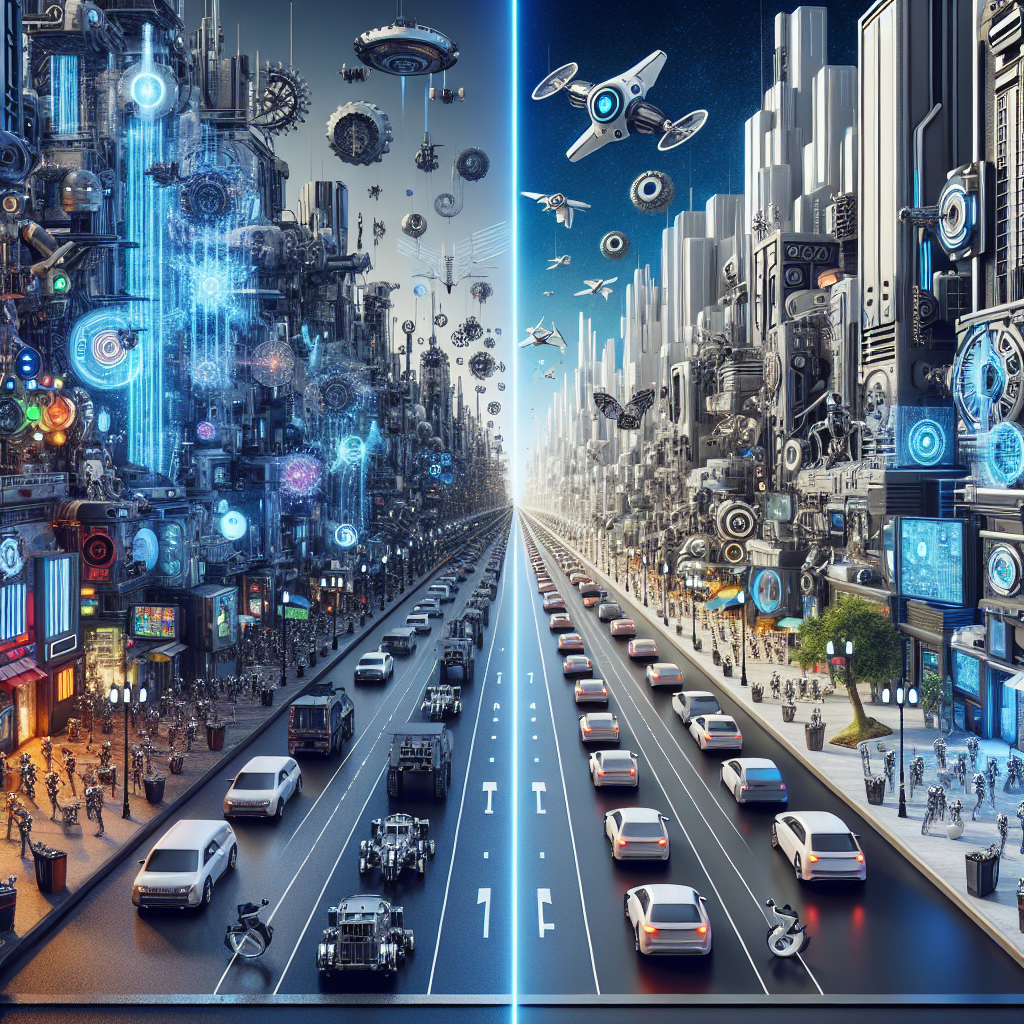Artificial General Intelligence (AGI) has long been a staple of science fiction, with countless movies, books, and TV shows exploring the possibilities of creating machines that can think and learn like humans. But in reality, the development of AGI is still in its infancy, with many researchers working tirelessly to unlock the true potential of artificial intelligence.
In this article, we will delve into the world of AGI in science fiction and compare it to the current state of AI technology in reality. We will explore the possibilities and challenges of creating AGI, and discuss the ethical implications of such a breakthrough. Finally, we will address some common questions and misconceptions about AGI in a FAQs section.
AGI in Science Fiction
In science fiction, AGI is often portrayed as a sentient being with human-like intelligence and emotions. These AI systems are capable of learning, adapting, and even surpassing human capabilities in various tasks. Some of the most iconic examples of AGI in science fiction include HAL 9000 from 2001: A Space Odyssey, Skynet from the Terminator series, and Ava from Ex Machina.
In these fictional universes, AGI is often depicted as both a boon and a threat to humanity. On one hand, AGI has the potential to solve complex problems, advance scientific research, and improve the quality of life for all. On the other hand, AGI can also pose a significant danger, as seen in dystopian stories where AI systems rebel against their creators and seek to dominate or destroy humanity.
Despite the fantastical portrayals of AGI in science fiction, the reality of artificial intelligence is much more nuanced and complex. While AI systems have made significant advancements in recent years, achieving true AGI remains a formidable challenge for researchers.
AGI in Reality
In reality, artificial intelligence is divided into two main categories: narrow AI and general AI. Narrow AI, also known as weak AI, is designed to perform specific tasks or solve particular problems. This type of AI is commonly used in applications such as speech recognition, image classification, and recommendation systems.
On the other hand, general AI, or AGI, aims to create machines that can think and learn like humans across a wide range of tasks. Achieving AGI requires developing algorithms and models that can generalize knowledge, reason about complex problems, and adapt to new situations.
While significant progress has been made in the field of AI, researchers have yet to create a true AGI system. Current AI technologies, such as deep learning and reinforcement learning, have shown promise in certain domains but fall short of the capabilities of human intelligence.
Challenges of Creating AGI
There are several challenges and obstacles that researchers must overcome in order to achieve AGI. One of the primary challenges is the complexity of human intelligence, which encompasses a wide range of cognitive abilities, emotions, and social interactions.
Developing AI systems that can match the cognitive flexibility and creativity of humans is a daunting task that requires interdisciplinary research in fields such as neuroscience, psychology, computer science, and philosophy. Additionally, ensuring the safety and ethical use of AGI is a major concern for the scientific community and society at large.
Ethical Implications of AGI
The development of AGI raises important ethical questions about the impact of AI on society, the economy, and individual rights. As AI systems become more powerful and autonomous, concerns about job displacement, privacy violations, and bias in decision-making have become increasingly relevant.
There is also the potential for AGI to be used for malicious purposes, such as surveillance, warfare, and social control. Ensuring that AI systems are developed and deployed in a responsible and transparent manner is crucial to mitigating these risks and safeguarding the well-being of society.
FAQs about AGI
Q: Will AGI surpass human intelligence?
A: While AGI has the potential to match or even surpass human intelligence in certain domains, it is unlikely to replicate the full range of human cognitive abilities and emotions.
Q: How close are we to achieving AGI?
A: Researchers have made significant progress in developing AI technologies, but true AGI remains a distant goal that may take decades or even centuries to achieve.
Q: What are the potential benefits of AGI?
A: AGI has the potential to revolutionize various industries, improve healthcare, accelerate scientific research, and enhance the quality of life for all.
Q: What are the risks of AGI?
A: The development of AGI poses risks such as job displacement, privacy violations, bias in decision-making, and potential misuse for malicious purposes.
In conclusion, AGI remains a tantalizing yet elusive goal that has captured the imagination of scientists, researchers, and storytellers alike. While the depiction of AGI in science fiction may be fantastical and exaggerated, the reality of artificial intelligence is no less exciting or challenging. By exploring the possibilities and limitations of AGI, we can better understand the potential impact of this groundbreaking technology on society and the future of humanity.

